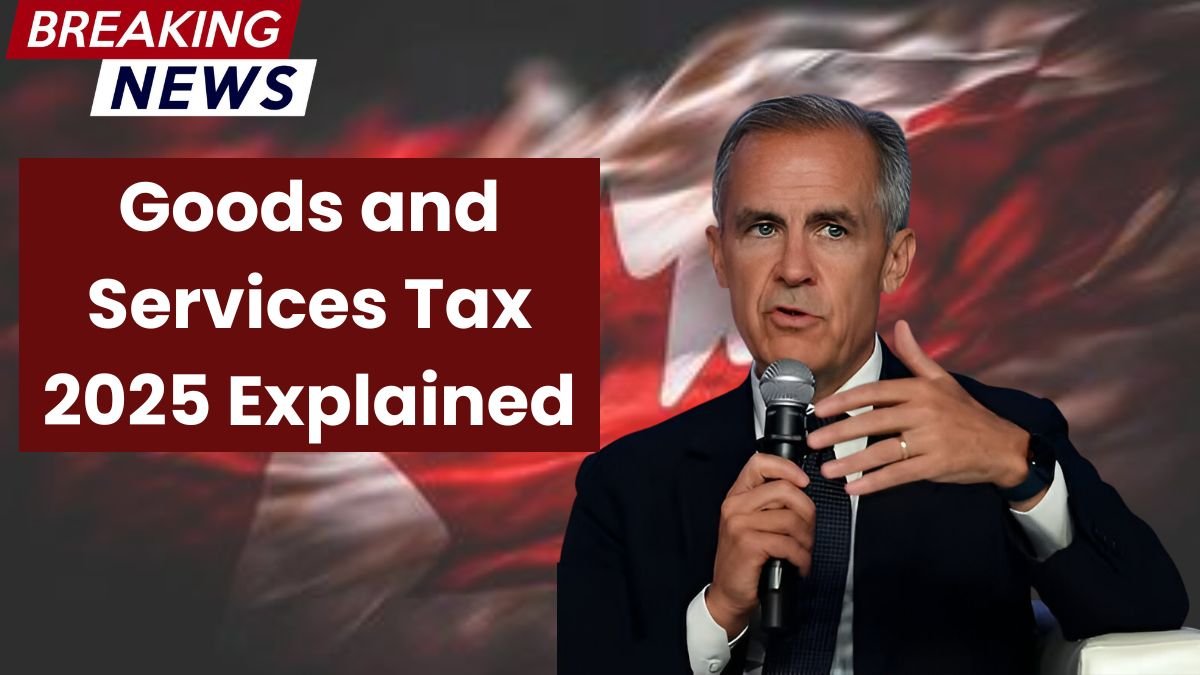GST 2025 News: Goods and Services Tax The Indian tax structure had undergone the biggest reform on July 1, 2017, when the Goods and Services Tax (GST) was launched. This tax has created a single tax regime in the nation by doing away with numerous indirect taxes such as Central Excise, Service Tax, VAT. Canada wage However, in 2025, there are certain significant changes and revisions which are going to be made in GST and these are quite significant not just to traders but to the general people as well.
In this article we will come to know what changes are occurring in GST in 2025, what are the new rates, in which areas the government will have more concentration and how all these changes can impact every common consumer as well as small traders.
What is GST?
It has now nearly been eight years since GST has been in effect in India, the Goods and Services Tax; and with the passage of time, it is expected that in 2025, a lot of improvements are to be put forth by the government. GST was implemented in the country on 1 July 2017, as it was all to suspend the different indirect taxes that were levied at both levels, i.e. central and state levels, into one tax system. Its objective was a tax system that was rendered, simple, transparent, and friendly for business purposes.
The most important thing that is coming up regarding GST in 2025 is Slab Simplification (Tax Slab Rationalization). Currently, there are mainly four tax slabs applicable in India – 5%, 12%, 18% and 28%, in addition some essential items fall in the 0% tax category. The government is considering creating a new standard slab by combining 12% and 18% slabs to make this system more transparent and simple. This will not only provide clarity to consumers, but will also make filing and calculation easier for traders.
Major updates and proposed changes in GST in 2025

- Simplification of GST slabs: The government is considering a plan to create a new standard slab by combining two slabs (12% and 18%) in 2025. This will make the rates easier to understand and will also increase transparency in tax collection.
- New proposed slab: 14% or 15% (between 12% and 18%)
- Making digital tracking and e-invoices mandatory: It will now be mandatory for more traders to generate e-invoices. This will curb fake billing and tax evasion.
- Relief to small traders: The composition scheme limit may be increased from ₹1.5 crore to ₹2 crore in 2025, so that small traders can work on simpler tax rates.
- Discussion to bring petrol and diesel under the ambit of GST: There has been a discussion for a long time that petroleum products should also be brought under GST. A big decision on this is possible in 2025.
- Strictness on real estate, gaming and online services: The government can make separate rules to prevent tax evasion in these areas. 28% tax on online gaming has been confirmed.
Impact on traders and entrepreneurs
- With the implementation of e-invoice, all transactions will be transparent.
- The GSTN portal is being upgraded to make compliance easier.
- Small traders will get the benefit of lower tax rates.
Impact on the general public
- With the merger of slabs, tax on many things will either increase or decrease.
- The impact can be seen on everyday items.
- There will be an effort to control inflation.
GST collection figures and 2025 forecast
According to government reports, India’s monthly GST collection was around ₹1.7 lakh crore by the end of 2024. This figure is estimated to reach ₹1.9 lakh crore in 2025.

2025 goal: Increase the tax base and prevent tax evasion through technology.
Benefits of GST 2025
- Tax structure will be simpler
- Compliance will become easier, paperwork will be reduced
- Improvement in business transparency
- Increase in government revenue
- More options and fair prices for customers
Challenges related to GST 2025
- Merging slabs may make some products expensive
- Small traders may face difficulties in technology adoption
- It may be challenging to reach a consensus between states and the Centre
Suggestions related to GST 2025
- Traders should file returns on time and adopt technology.
- Customers must take bills so that the tax system remains transparent.
- The government should make the GST portal more user-friendly.
Role of GST Council and possible meetings in 2025
The responsibility of implementing and making changes in GST rests with the GST Council, which has representatives from the central and state governments. Several important meetings of the Council are proposed in 2025, the key points of which will be:
- Final decision on tax slab simplification
- Announcement of new digital portal update
- Discussion on extension of GST compensation scheme to states
- Tax exemption on special items (such as agricultural equipment, healthcare goods)
- Important: The GST Council has indicated that special tax guidelines can also be brought on digital services and freelancing.
Technological changes coming in GSTN portal in 2025
New features are being added for traders on the GST Network (GSTN) portal:
- AI based invoice matching system
- GSTR-1 and GSTR-3B filing from mobile app
- Chatbot based assistance
- Automatic data feed system
- It may be mandatory for traders to use GSTN 2.0 instead of the old portal from 2025.
On which items is there a possibility of change in GST rate in 2025?
| Item | Current GST | Proposed Rate 2025 | Impact |
|---|---|---|---|
| LED Bulbs | 12% | 5% | Cheaper |
| Online Gaming | 18% | 28% | More Expensive |
| Electric Vehicles | 5% | 3% (Proposed Reduction) | Cheaper |
| Home Appliances | 18% | Up to 20% | More Expensive |
| Health Insurance | 18% | Down to 12% | Cheaper |
New facility related to GST return filing in 2025
Some new initiatives are being taken by the government to make the life of the taxpayer easier:
- Unified return system: GSTR-1 and GSTR-3B will be integrated.
- Automatic tax calculation: Easy to fill forms with real time data.
- OTP based login verification.
- NIL return filing through SMS.
GST 2025 Tips for Traders and Consumers
For traders:
- Be familiar with the GSTN portal
- Prepare for e-invoices now
- Adopt digital accounting tools
For consumers:
- Always ask for tax invoices
- Be aware of changes in tax rates
- Know which products come under 0% tax
Conclusion
The changes coming in the GST system in 2025 are a big step towards making India’s tax structure stronger and simpler. While traders will get the benefit of more transparency and digital tools, consumers will also see the impact of these changes in their daily expenses. The government’s goal is to increase tax collection, but the convenience of the taxpayer should also remain. In such a situation, it is important that we understand, adopt the new rules in time and contribute to the development of the country.
FAQs
Q1. What is the Goods and Services Tax (GST)?
A. GST is a comprehensive indirect tax levied on the supply of goods and services in India. It replaced multiple cascading taxes imposed by the central and state governments.
Q2. What major GST changes are expected in 2025?
A. In 2025, key proposed changes include merging the 12% and 18% slabs, revising rates for digital services, simplifying the compliance process, and expanding the e-invoicing mandate.
Q3. Will the number of GST slabs be reduced in 2025?
A. Yes, there are ongoing discussions about merging the 12% and 18% slabs to create a more streamlined and efficient GST structure.
Q4. Is GST on electric vehicles (EVs) expected to change?
A. The government is considering a further reduction in GST on electric vehicles, possibly from 5% to 3%, to promote sustainable transportation.
Q5. How will online gaming and betting be taxed in 2025?
A. Online gaming, casinos, and betting may be brought under a higher GST rate of 28% as they are considered luxury or non-essential services.









